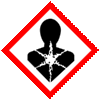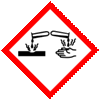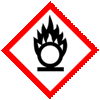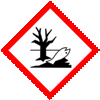 |
King of Chemicals Manufacturers |
Specifications, Properties, Uses, SDS of Sodium Chlorite Solution and Powder FCC Food Grade Manufacturer Supplier Exporter Wholesale & Small Packs, CAS Number 7758-19-2. |
|
| King of Chemicals has several associated companies having accreditations like cGMP, GLP - FDA Approved Good Manufacturing Practice and Good Laboratory Practice of WHO standard, ISO-9001, ISO-14001, ISO/IEC 17025, ISO ISO-45000, HACCP, FSSC 220000, FSSAI, "REACH" Registered, Kosher & Halal Certified. e-CTD and DMF support can be made available if needed. We offer USP NF BP Ph Eur EP IP JP Analytical Reagent FCC Food Grade Chemicals & Nutraceuticals. | |
        |
|
Muby Chem Pvt. Ltd. is a several decades old group of companies, engaged in manufacturing, supplying, distributing, wholesale supplies of Sodium Chlorite Solution and Powder for actual users, including retail or small pack supplies for research and development work.
We supply fine and speciality chemicals, pharmaceutical excipients, mineral fortifiers in chemically pure, analytical reagent grade, IP BP USP Ph Eur EP JP and other pharmaceutical grade monograph including FCC Food grade chemicals and Nutraceuticals at best prices. We and/or our associated units have all the facilities to supply as per cGMP standard observing good manufacturing practice and good laboratory practice. We can assure low microbial count and also offer a test certificate for the same. We maintain warehouses across USA, India, and UAE. Our group exports to USA, Canada, Mexico, Argentina, Brazil, Chile, Korea, Malaysia, Thailand, Indonesia, Europe, and several other parts of the world. We supply in wholesale container loads to small pack of few grams. Solid products may be specified for it size and shape as desired by the buyer.








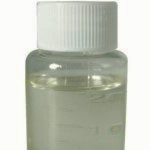
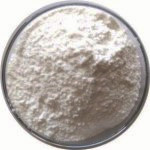
Sodium Chlorite Solution and Powder CAS Number 7758-19-2
For Properties Specifications Uses of Sodium Chlorite Solution and Powder Click Properties, Specifications, Uses, Price, Process of Sodium Chlorite Solution and Powder Manufacturer.
For For SDS MSDS Sheet of Sodium Chlorite Solution and Powder Click SDS Safety Data Sheet MSDS Sheet of Sodium Chlorite Powder Manufacturer.
For For SDS MSDS Sheet of Sodium Chlorite Solution and Powder Click SDS Safety Data Sheet MSDS Sheet of Sodium Chlorite Solution Manufacturer.
The Properties, Specifications, Monograph and Uses of Sodium Chlorite Solution and Powder:
CAS Number: 7758-19-2, EINECS EC Number: 231-836-6, Molecular Formula: NaClO2, Molecular Weight: 90.45, HS Code 28289030
Sodium chlorite (NaClO2) is a chemical compound used in the manufacturing of paper and as a disinfectant. Sodium Chlorite Solid is also used in producing chlorine dioxide, bleaching textiles, fiber, paper pulp, sand sugar, flour, wax, fruit etc., or certain metal surface treating, drink water and waste-water purification etc. In organic synthesis, sodium chlorite is frequently used as a reagent in the Pinnick oxidation for the oxidation of aldehydes to carboxylic acids. During COVID-19 pandemic, the U.S. Environmental Protection Agency has posted a list of many disinfectants, which includes sodium chlorite bsed products, that meet its criteria for use in environmental measures against the causativecoronavirus. It has a role as an oxidising agent. It is also used as an additive in products like toothpaste and mouthwash.
Specifications of Sodium Chlorite 80% Powder:
Appearance: White to off-white powder, crystals, or flakes.
Odor: Faint bleach like odor.
Assay: 80% minimum as NaClO2
Total Alkalinity: 10% as NaOH maximum.
Specifications of Sodium Chlorite 31% Solution:
Appearance: Clear or light yellowish liquid.
Odor: Faint bleach like odor.
Sodium Chlorite: 31% (1% deviation on either side) as NaClO2 (other dilutions can be offered).
Total Alkalinity: 2.5% as NaOH maximum.
Water: 55% to 62 5%
pH: 12 to 13.5
Specific Gravity: 1.27 to 1.32
Acidified Sodium Chlorite Solutions FCC Food Grade:
DESCRIPTION
Acidified Sodium Chlorite (ASC) Solutions occur as clear, colorless to pale-yellow liquids. The ASC Solutions are equilibrium mixtures of sodium chlorite (NaClO2) and chlorous acid (HClO2). ASC Solutions are produced by lowering the pH of a sodium chlorite solution with a safe and suitable acid to achieve a pH within the range 2.3 to 3.9 depending on the intended use.
Function: Antimicrobial agent in processing water used to spray, dip, rinse, or store food before processing, to be followed by rinsing in potable water or by blanching, cooking, or canning; sanitizer for hard surfaces; broad-spectrum bactericide, virucide, fungicide, and sporicide.
Lead: Not more than 1 mg/kg.
Mercury: Not more than 1 mg/kg.
pH: Between 2.3 and 3.9.
Note: The pH is chosen depending on the application; it controls the concentration of metastable chlorous acid, which rapidly breaks down into chlorine dioxide, chloride, and in some applications, chlorate.
Caution: To minimize the evolution of hazardous chlorine dioxide gas, do not adjust the pH below 2.3.
Sodium Chlorite: Between 40 and 1200 ppm, depending on the application.
The MSDS-SDS Hazard Statement of Sodium Chlorite Powder:
Sodium Chlorite Powder 80% SDS, Safety Data Sheet
MSDS, Material Safety Data Sheet 07-Aug-21
1. Product & Company Identification
Product/Synonyms: Sodium Chlorite Powder.
CAS No.: 7758-19-2 for main ingredient.
EINECS EC Number: 231-836-6
Molecular Weight: 90.44 for main ingredient.
Chemical Formula: NaClO2 for main ingredient.
Intended Use: Oil & Gas Wells fracturing and Industrial Manufacturing.
Recommended uses and uses advised against (if any): Precursor for generation of chlorine dioxide gas used in water treatment.
SUPPLIER: As per letterhead.
2. Hazards Identification
GHS, Globally Harmonized System Classification in accordance with 29 CFR 1910
Classification according to Regulation (EC) No 1272/2008
Oxidizing solids Category 1, H271
Health, Acute toxicity, Category 4 Oral, H302
Health, Acute toxicity, Category 2 Dermal, H311
Skin corrosion Sub-category 1B, H314
Health, Specific target organ toxicity - Single exposure, Category 2, H373
Environmental, Hazards to the aquatic environment - acute hazard, 1, H400
Labeling according to GHS USA & Regulation (EC) No 1272/2008
GHS Label Elements  Toxic |
GHS Label Elements |
GHS Label Elements |
GHS Label Elements |
GHS Label Elements |
|
Signal Word: Danger
Hazard Statements:
H271: May cause fire or explosion; strong oxidizer.
H302: Harmful if swallowed.
H310: Fatal in contact with skin.
H314: Causes severe skin burns and eye damage.
H373: May cause damage to organs through prolonged or repeated exposure.
H400: Very toxic to aquatic life.
EUH032: Contact with acids liberates very toxic gas.
Precautionary Statements
P234: Keep only in original container.
P260: Do not breathe dust/fume/gas/mist/vapors/spray.
P264: Wash ... thoroughly after handling.
P270: Do not eat, drink or smoke when using this product.
P273: Avoid release to the environment.
P280-Wear protective gloves/protective clothing/eye protection/face protection.
P301+P312: IF SWALLOWED: Call a POISON CENTER or doctor/physician if you feel unwell.
P302+P352: IF ON SKIN: Wash with soap and water.
P305+P351+P338: IF IN EYES: Rinse cautiously with water for several minutes. Remove contact lenses, if present and easy to do. Continue rinsing.
P312: Call a POISON CENTER or doctor/physician if you feel unwell.
P314: Get Medical advice/attention if you feel unwell.
P330: If swallowed, rinse mouth.
P337+P313 If eye irritation persists: Get medical advice/ attention.
P361: Call a POISON CENTER or doctor/physician if you feel unwell.
P360: Rinse immediately contaminated clothing and skin with plenty of water before removing clothes.
P363 : Wash contaminated clothing before reuse.
P390: Absorb spillage to prevent material damage.
P391: Collect spillage.
P404: Store in a closed container.
P405: Store locked up.
P501: Dispose of contents/container in accordance with local/regional/national/international regulations.
3. Composition/Information on Ingredients
Product/Synonyms: Sodium Chlorite Powder.
CAS No.: 7758-19-2 for main ingredient.
EINECS EC Number: 231-836-6
4. First Aid Measures
Always seek medical attention after first aid measures are provided.
Inhalation: Remove to fresh air. If not breathing, give artificial respiration. If breathing is difficult, give oxygen. Get medical attention.
Ingestion: If swallowed, do not induce vomiting. Give large quantities of water. Never give anything by mouth to an unconscious person. Get medical attention immediately.
Skin Contact: In case of contact, immediately flush skin with plenty of water for at least 15 minutes while removing contaminated clothing and shoes. Cover the irritated skin with an emollient. Cold water may be used. Wash clothing & shoes before reuse. Get medical attention.
Eye Contact: Check for and remove any contact lenses. In case of contact, immediately flush eyes with plenty of water for at least 15 minutes. Cold water may be used. Get medical attention.
5. Fire Fighting Measures
Fire: Not combustible, but substance is a strong oxidizer and its heat of reaction with reducing agents. Heating will release chlorine dioxide or hydrochloric acid.
Explosion: An explosion hazard when mixed with finely powdered organic matter, metal powder or reducing agents.
Fire Extinguishing Media: Use water spray, dry chemical, carbon dioxide, or chemical foam. Use means suitable for extinguishing surrounding fire.
Extinguishing Media Not recommended: None specified.
Special Information: In the event of a fire, wear full protective clothing and NIOSH-approved self-contained breathing apparatus with full face piece operated in the pressure demand or other positive pressure mode. At high temperatures under fire conditions, it may produce toxic or irritating fumes. Fire-extinguishing work is done from the windward and the suitable fire-extinguishing method according to the surrounding situation is used. Uninvolved persons should evacuate to a safe place.
Hazardous Combustible Products: If product dry, heat or friction can easily ignite this product. Do not allow this product to dry on cloth or clothing. Oxidation can cause a fire hazard. Hydrogen chloride and Chlorine dioxide will evolve.
6. Accidental Release Measures
Personal precautions, protective equipment, environmental precautions and emergency procedures: Avoid breathing dust/fumes/gas/mist/vapors/spray. Use individual protective equipment (waterproof boots, suitable protective clothing, safety glasses, etc.). Restrict unprotected personnel from the area. Prevent any contact with hot surfaces. Do not approach facing the wind. Keep away from drains, surface, groundwater, and soil.
Methods and materials used for containment cleanup procedures and Storage: Contain spilled material. It is an oxidizing material. Stop leak if without risk. Avoid contact with a combustible material (wood, paper, oil, clothing...). Do not touch spilled material. Prevent entry into sewers. Eliminate all ignition sources.
Evacuation procedures must be placed into effect. Evacuate all non-essential personnel. Hazardous concentrations in air may be found in local spill area and immediately downwind. Utilize emergency response personal protective equipment prior to the start of any response. This product may represent an explosion hazard, in the form of explosive chlorine dioxide gas if it contacts acid or chlorine. Remove all sources of ignition, such as flames, hot glowing surfaces, or electric arcs. Stop source of spill as soon as possible and notify appropriate personnel. Notify all downstream water users of possible contamination. Spill materials may be covered using clay, soil, or non-flammable commercial absorbents.
Deactivating Materials: Small spills that have been diluted with water can be neutralized with sodium sulphite or sodium bisulphite solutions.
7. Handling and Storage
Precautions for safe handling: Apply according to good manufacturing and industrial hygiene practices with proper ventilation. Wash thoroughly after handling. Do not drink, eat, or smoke while handling. Avoid contact with skin, eyes, and clothing. Use with adequate ventilation. Minimize dust generation and accumulation. Avoid breathing dust/fumes/gas/mist/vapors/spray. Avoid contact with eyes, skin, and clothing. Keep container tightly closed. Avoid ingestion and inhalation. Use individual protective equipment (waterproof boots, suitable protective clothing, safety glasses, etc.). Prevent any contact with hot surfaces. Containers of this material may be hazardous when empty since they retain product residues.
Conditions for safe storage, including any incompatibilities: Store in cool, dry, and ventilated area away from heat sources and protected from sunlight in tightly closed original container. Keep air contact to a minimum. Store protected from heat, sparks and ignition sources and incompatible materials. Avoid contact with skin and eyes. Avoid inhalation of dust/mist/vapor. Do not store with incompatible materials like reducing agents, organic material and powdered metals, heat, sulfur containing compounds, acids. Isolate from heat and sun. Separate from combustibles, organic or other readily oxidizable materials. Avoid storage on wood floors.
8. Exposure Controls/Personal Protection
Airborne Exposure Limits: - Not established. Maintain Shower, Eye Wash and use under good ventilation only.
Ventilation System: A system of local and/or general exhaust is recommended to keep employee exposures as low as possible. Local exhaust ventilation is generally preferred because it can control the emissions of the contaminant at its source, preventing dispersion of it into the general work area.
Personal Respirators (NIOSH Approved): For conditions of use where exposure to dust or mist is apparent and engineering controls are not feasible, a particulate respirator may be worn. For emergencies or instances where the exposure levels are not known, use a full-face positive-pressure, air-supplied respirator.
Skin Protection: Wear protective gloves and clean body-covering clothing.
Eye Protection: Use chemical safety goggles and/or full-face shield where dusting or splashing of solutions is possible. Maintain eye wash fountain and quick-drench facilities in work area.
Other Control Measures: Maintain good housekeeping in work area. Dust deposits on floors and other surfaces may pick up moisture and cause the surfaces to become slippery and present safety hazards. Handle in accordance with good industrial hygiene and safety practice.
9. Physical and Chemical Properties
Appearance: White to off-white powder, crystals, or flakes.
Odor: Chlorine odor.
Odor threshold: Not available.
pH: Not available.
Relative density: Not available.
Boiling Point: Not available.
Melting Point: Not available.
Flash point: Not available.
Auto-ignition temperature: Not available.
Decomposition temperature: Not available.
Upper/lower flammability or explosive limits: Not available.
Vapor pressure: Not available.
Vapor density: Not available.
Evaporation rate: Not available.
Flammability (solid, gas): Not available.
Partition coefficient: n-octanol/water: Not available.
Solubility: Soluble in water.
Viscosity: Not available.
Molecular Weight: 90.44 for main ingredient.
Chemical Formula: NaClO2 for main ingredient.
10. Stability and Reactivity
Stability: It is stable under ordinary conditions of use and storage.
Hazardous Decomposition Products: Decomposed by heat, sunlight, and organic substances. Burning may produce chlorine and its oxide and hydrochloric acid.
Hazardous Polymerization: Will not occur.
Incompatibilities: Reducing agents, organic material and powdered metals, heat, sulfur containing compounds, acids.
Conditions to Avoid: Heat, combustible materials, and incompatibles.
11. Toxicological Information
Oral rat LD50: 165 mg/kg on 100% basis.
Carcinogenic Effects: Not listed by NTP, IARC, OSHA, or any other authority as a carcinogen.
Teratogenic Effects: Not available.
Mutagenic Effects: Not available.
Developmental Toxicity: Not available.
Reproductive Effects: No information available.
12. Ecological Information
Environmental Fate: Fish Toxicity TL50 (48 hours, Daphnia Magna): 0.29mg/L
Biodegradability: Sodium chlorite in water will eventually degrade to sodium chloride. Sodium chlorite in contact with acidic soil could produce chlorine dioxide.
Environmental Toxicity: This product is toxic to fish and aquatic organisms. Do not discharge effluent containing this product into bodies of water unless in accordance with law.
13. Disposal Considerations
Whatever cannot be saved for recovery or recycling should be handled as hazardous waste and sent to a RCRA approved waste facility. Processing use or contamination of this product may change the waste management options. State and local disposal regulations may differ from federal disposal regulations. Dispose of container and unused contents in accordance with law.
14. Transport Information
DOT USA, TDG Canada & ADR/RID Europe
Proper Shipping Name: SODIUM CHLORITE
UN/NA: UN 1496; Hazard Class: 5.1; Packing Group: II
International Water Transport IMO/IMDG
Proper Shipping Name: SODIUM CHLORITE
UN/NA: UN 1496; Hazard Class: 5.1; Packing Group: II.
International Air Transport ICAO/IATA
Proper Shipping Name: SODIUM CHLORITE
UN/NA: UN 1496; Hazard Class: 5.1; Packing Group: II.
15. Regulatory Information
Section 313: No chemicals are reportable under Section 313.
California Prop 65: No Significant Risk Level: None of the chemicals in this product are listed.
Section 16 - Additional Information
DISCLAIMER: The information and recommendations set forth herein are presented in good faith and believed correct as of the date hereof. It is compiled from various sources, and it is not necessarily all inclusive nor fully adequate in every circumstance. In addition, these suggestions should not be confused with nor followed in violation of applicable laws, regulations, rules, or insurance requirements applicable. This SDS MSDS sheet is intended only as a guide to the appropriate precautionary handling of the material by a professionally trained person using this product. Individuals receiving the information must exercise their independent judgment in determining its appropriateness for a particular purpose. This shall not constitute a guarantee for any specific product features and shall not establish a legally valid contractual relationship. In no case shall our company be liable to loss or damages by the product user.The MSDS-SDS Hazard Statement of Sodium Chlorite Solution:
Sodium Chlorite 16% to 31% Solution SDS, Safety Data Sheet
MSDS, Material Safety Data Sheet 07-Aug-21
1. Product & Company Identification
Product/Synonyms: Sodium Chlorite or Stabilized chlorine dioxide in water
CAS No.: 7758-19-2 for dry material.
Molecular Weight: 90.44 for dry material.
Chemical Formula: NaClO2 for dry material.
Intended Use: Oil & Gas Wells fracturing and Industrial Manufacturing.
Recommended uses and uses advised against (if any): Precursor for generation of chlorine dioxide gas used in water treatment.
SUPPLIER: As per letterhead.
2. Hazards Identification
GHS, Globally Harmonized System Classification in accordance with 29 CFR 1910
Classification according to Regulation (EC) No 1272/2008
Corrosive to Metals Category 1, H290
Health, Acute toxicity, 3 Oral, H302
Health, Acute toxicity, 3 Dermal, H311
Health, Serious eye damage/eye irritation Category 1, H318
Health, Specific target organ toxicity - Single exposure, Category 2, H373
Environmental, Hazards to the aquatic environment - acute hazard, 1, H400
Labeling according to GHS USA & Regulation (EC) No 1272/2008
GHS Label Elements 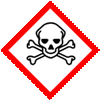 Toxic |
GHS Label Elements |
GHS Label Elements |
Signal Word: Danger
Hazard Statements:
H290: May be corrosive to metals.
H302: Harmful if swallowed.
H311: Toxic in contact with skin.
H318: Causes serious eye damage.
H373: May cause damage to organs through prolonged or repeated exposure.
H400: Very toxic to aquatic life.
EUH032: Contact with acids liberates very toxic gas.
This is a dilute product. However, it must be handled carefully. It may intensify fire, oxidizer.
Precautionary Statements
P234: Keep only in original container.
P260: Do not breathe dust/fume/gas/mist/vapors/spray.
P264: Wash ... thoroughly after handling.
P270: Do not eat, drink or smoke when using this product.
P273: Avoid release to the environment.
P280-Wear protective gloves/protective clothing/eye protection/face protection.
P301+P312: IF SWALLOWED: Call a POISON CENTER or doctor/physician if you feel unwell.
P302+P352: IF ON SKIN: Wash with soap and water.
P305+P351+P338: IF IN EYES: Rinse cautiously with water for several minutes. Remove contact lenses, if present and easy to do. Continue rinsing.
P312: Call a POISON CENTER or doctor/physician if you feel unwell.
P314: Get Medical advice/attention if you feel unwell.
P330: If swallowed, rinse mouth.
P337+P313 If eye irritation persists: Get medical advice/ attention.
P361: Call a POISON CENTER or doctor/physician if you feel unwell.
P360: Rinse immediately contaminated clothing and skin with plenty of water before removing clothes.
P363: Wash contaminated clothing before reuse.
P390: Absorb spillage to prevent material damage.
P391: Collect spillage.
P404: Store in a closed container.
P405: Store locked up.
P501: Dispose of contents/container in accordance with local/regional/national/international regulations.
3. Composition/Information on Ingredients
Ingredient:| Chemical Name & CAS Number | % Range |
Sodium Chlorite -- 7758-19-2 EINECS EC code number: 231-836-6 |
2%-31% |
Sodium Chloride - 7647-14-5 |
0%-5% |
Sodium Chlorate - 7775-09-9 |
0%-3% |
Water ------------ 7732-18-5 |
77%-98% |
4. First Aid Measures
Always seek medical attention after first aid measures are provided.
Inhalation: Remove to fresh air. If not breathing, give artificial respiration. If breathing is difficult, give oxygen. Get medical attention.
Ingestion: If swallowed, do not induce vomiting. Give large quantities of water. Never give anything by mouth to an unconscious person. Get medical attention immediately.
Skin Contact: In case of contact, immediately flush skin with plenty of water for at least 15 minutes while removing contaminated clothing and shoes. Cover the irritated skin with an emollient. Cold water may be used. Wash clothing & shoes before reuse. Get medical attention.
Eye Contact: Check for and remove any contact lenses. In case of contact, immediately flush eyes with plenty of water for at least 15 minutes. Cold water may be used. Get medical attention.
5. Fire Fighting Measures
Fire: Sodium Chlorite solution is not combustible, but substance is a strong oxidizer and its heat of reaction with reducing agents. Heating will release chlorine dioxide or hydrochloric acid.
Explosion: An explosion hazard when mixed with finely powdered organic matter, metal powder or reducing agents.
Fire Extinguishing Media: Use water spray, dry chemical, carbon dioxide, or chemical foam. Use means suitable for extinguishing surrounding fire.
Extinguishing Media Not recommended: None specified.
Special Information: In the event of a fire, wear full protective clothing and NIOSH-approved self-contained breathing apparatus with full face piece operated in the pressure demand or other positive pressure mode. Sealed containers may rupture when heated.
Hazardous Combustible Products: If product dry, heat or friction can easily ignite this product. Do not allow this product to dry on cloth or clothing. Oxidation can cause a fire hazard. Hydrogen chloride and Chlorine dioxide will evolve.
6. Accidental Release Measures
Personal precautions, protective equipment, environmental precautions and emergency procedures: Avoid breathing dust/fumes/gas/mist/vapors/spray. Use individual protective equipment (waterproof boots, suitable protective clothing, safety glasses, etc.). Restrict unprotected personnel from the area. Prevent any contact with hot surfaces. Do not approach facing the wind. Do not touch the spilled material. Keep away from drains and groundwater.
Methods and materials used for containment cleanup procedures and Storage: Contain spilled material. It is an oxidizing material. Stop leak if without risk. Avoid contact with a combustible material (wood, paper, oil, clothing...). Do not touch spilled material. Prevent entry into sewers. Eliminate all ignition sources.
Evacuation procedures must be placed into effect. Evacuate all non-essential personnel. Hazardous concentrations in air may be found in local spill area and immediately downwind. Utilize emergency response personal protective equipment prior to the start of any response. This product may represent an explosion hazard, in the form of explosive chlorine dioxide gas if it contacts acid or chlorine. Remove all sources of ignition, such as flames, hot glowing surfaces, or electric arcs. Stop source of spill as soon as possible and notify appropriate personnel. Notify all downstream water users of possible contamination. Spill materials may be absorbed using clay, soil, or non-flammable commercial absorbents. Flush spill area with large amounts of water. If allowed to dry, dried material can ignite in contact with combustible materials so do not allow spills to dry up.
Deactivating Materials: Small spills that have been diluted with water can be neutralized with sodium sulphite or sodium bisulphite solutions.
7. Handling and Storage
Precautions for safe handling: Apply according to good manufacturing and industrial hygiene practices with proper ventilation. Wash thoroughly after handling. Do not drink, eat, or smoke while handling. Avoid contact with skin, eyes, and clothing. Use with adequate ventilation. Minimize dust generation and accumulation. Avoid breathing dust/fumes/gas/mist/vapors/spray. Avoid contact with eyes, skin, and clothing. Keep container tightly closed. Avoid ingestion and inhalation. Use individual protective equipment (waterproof boots, suitable protective clothing, safety glasses, etc.). Prevent any contact with hot surfaces.
Conditions for safe storage, including any incompatibilities: Store in cool, dry, and ventilated area away from heat sources and protected from sunlight in tightly closed original container. Keep air contact to a minimum. Store protected from heat, sparks and ignition sources and incompatible materials. Avoid contact with skin and eyes. Avoid inhalation of dust/mist/vapor. Do not store with incompatible materials like reducing agents, organic material and powdered metals, heat, sulfur containing compounds, acids. Isolate from heat and sun. Separate from combustibles, organic or other readily oxidizable materials. Avoid storage on wood floors.
8. Exposure Controls/Personal Protection
Airborne Exposure Limits: - Not established. Maintain Shower, Eye Wash and use under good ventilation only.
Ventilation System: A system of local and/or general exhaust is recommended to keep employee exposures as low as possible. Local exhaust ventilation is generally preferred because it can control the emissions of the contaminant at its source, preventing dispersion of it into the general work area.
Personal Respirators (NIOSH Approved): For conditions of use where exposure to dust or mist is apparent and engineering controls are not feasible, a particulate respirator may be worn. For emergencies or instances where the exposure levels are not known, use a full-face positive-pressure, air-supplied respirator.
Skin Protection: Wear protective gloves and clean body-covering clothing.
Eye Protection: Use chemical safety goggles and/or full-face shield where dusting or splashing of solutions is possible. Maintain eye wash fountain and quick-drench facilities in work area.
Other Control Measures: Maintain good housekeeping in work area. Dust/mist deposits on floors and other surfaces may pick up moisture and cause the surfaces to become slippery and present safety hazards. Handle in accordance with good industrial hygiene and safety practice.
9. Physical and Chemical Properties
Appearance: Clear to yellow solution.
Odor: Chlorine odor.
Odor threshold: Not available.
pH: 7 to 13.
Relative density: 1.05 to 1.23
Boiling Point: 106C
Melting Point: 0C
Flash point: Not available.
Auto-ignition temperature: Not available.
Decomposition temperature: Not available.
Upper/lower flammability or explosive limits: Not available.
Vapor pressure: Not available.
Vapor density: Not available.
Evaporation rate: Not available.
Flammability (solid, gas): Not available.
Partition coefficient: n-octanol/water: Not available.
Solubility: Soluble in water.
Viscosity: Not available.
Molecular Weight: 90.44 for dry material.
Chemical Formula: NaClO2 in water.
10. Stability and Reactivity
Stability: It is stable under ordinary conditions of use and storage.
Hazardous Decomposition Products: Decomposed by heat, sunlight, and organic substances. Burning may produce chlorine and its oxide and hydrochloric acid.
Hazardous Polymerization: Will not occur.
Incompatibilities: Reducing agents, organic material and powdered metals, heat, sulfur containing compounds, acids.
Conditions to Avoid: Heat, combustible materials, and incompatibles.
11. Toxicological Information
Oral rat LD50: 165 mg/kg on 100% basis.
Carcinogenic Effects: Not listed by NTP, IARC, OSHA, or any other authority as a carcinogen.
Teratogenic Effects: Not available.
Mutagenic Effects: Not available.
Developmental Toxicity: Not available.
Reproductive Effects: No information available.
12. Ecological Information
Environmental Fate: Fish Toxicity TL50 (48 hours, Daphnia Magna): 0.29mg/L
Biodegradability: Sodium chlorite in water will eventually degrade to sodium chloride. Sodium chlorite in contact with acidic soil could produce chlorine dioxide.
Environmental Toxicity: This product is toxic to fish and aquatic organisms. Do not discharge effluent containing this product into bodies of water unless in accordance with law.
13. Disposal Considerations
Whatever cannot be saved for recovery or recycling should be handled as hazardous waste and sent to a RCRA approved waste facility. Processing use or contamination of this product may change the waste management options. State and local disposal regulations may differ from federal disposal regulations. Dispose of container and unused contents in accordance with law.
14. Transport Information
DOT USA, TDG Canada & ADR/RID Europe
Proper Shipping Name: CHLORITE SOLUTION
UN/NA: UN 1908; Hazard Class: 8; Packing Group: II
International Water Transport IMO/IMDG
Proper Shipping Name: CHLORITE SOLUTION
UN/NA: UN 1908; Hazard Class: 8; Packing Group: II
International Air Transport ICAO/IATA
Proper Shipping Name: CHLORITE SOLUTION
UN/NA: UN 1908; Hazard Class: 8; Packing Group: II.
15. Regulatory Information
Section 313: No chemicals are reportable under Section 313.
California Prop 65: No Significant Risk Level: None of the chemicals in this product are listed.
Section 16 - Additional Information
DISCLAIMER: The information and recommendations set forth herein are presented in good faith and believed correct as of the date hereof. It is compiled from various sources, and it is not necessarily all inclusive nor fully adequate in every circumstance. In addition, these suggestions should not be confused with nor followed in violation of applicable laws, regulations, rules, or insurance requirements applicable. This SDS MSDS sheet is intended only as a guide to the appropriate precautionary handling of the material by a professionally trained person using this product. Individuals receiving the information must exercise their independent judgment in determining its appropriateness for a particular purpose. This shall not constitute a guarantee for any specific product features and shall not establish a legally valid contractual relationship. In no case shall our company be liable to loss or damages by the product user.
Sodium Chlorite Solution and Powder Manufacturers, Suppliers, Exporters, Wholesalers:
King of Chemicals manufacturers

Plot No. 2900/46&47 + 2900/163to167, GIDC, Ankleshwar, Dist. Bharuch, India
India, USA, UAE
TEL: (Office) 91-22-23774610, 91-22-23723564
e-mail: info@kingofchemicals.com
Copyright and Usual Disclaimer is Applicable --- October 27, 2024
If I give you “My Word” Nobody can undo it.
If I sign an “Agreement” my Lawyer will undo it
Our products are for industrial and laboratory use only. The user must test the material before use. We are not dispensing chemists or druggist and do not offer over the counter type (OTC) products for medical use by individuals.
We and our associates manufacture pure chemicals surpassing Monograph Specifications of Analytical Reagent Standards, British & European Pharmacopoeia BP Ph Eur EP Standard, US Pharmacopoeia USP NF Standard, Indian Pharmacopoeia IP Standard, Japan Pharmacopoeia JP Standard, FCC Food Grade Standard. |
|
|
Aluminium Chloride Hexahydrate Aluminum Chlorohydrate Powder and Solution Copper Cupric & Cuprous Chloride Magnesium Chloride Hexahydrate Copper Cupric & Cuprous Chloride |
Hydrated Sodium Glycerophosphate |
